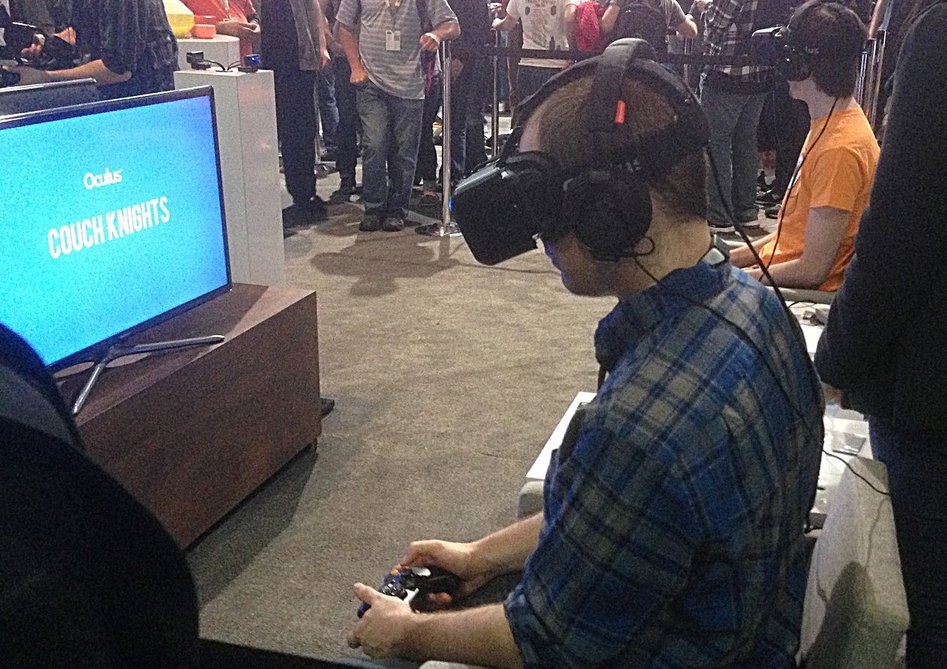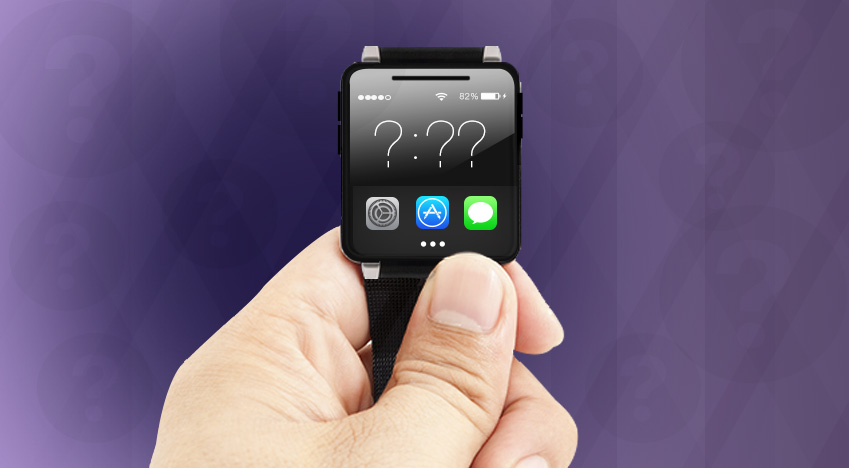En Guarde! Couch Knights and the Oculus Rift at PAX East
While there were a lot of cool things demoed at PAX East 2014, the most exciting part of my experience there was getting to try the latest version of the Oculus Rift. The Oculus Rift, for the unaware, is a head-mounted virtual reality display. VR headsets have been forgotten about or made fun of since the mid-90s (rightfully), but the Rift shows that technology can now do the concept justice.
The Backstory
Where headsets in the 90s were expensive, heavy, unresponsive, had primitive displays, and were used in conjunction with primitive 3D games, Oculus promised a lightweight and affordable headset that would deliver a convincing 3D image wrapped around a user’s field of view, using a low-lag rotational tracking to allow users to naturally look around inside a modern 3D environment.
The Oculus made waves in 2012 after a successful Kickstarter campaign with a lot of endorsements from video game industry heavyweights like John Carmack, Gabe Newell and Cliff Bleszinski. Since then Oculus has released an initial development kit, raised another $75 million in funding, demonstrated and announced an enhanced development kit (“DK2,” slated for July) and recruited a few more big names (like former Valve VR expert Michael Abrash). The biggest surprise came in March when Facebook scooped them up for $2 billion.
I’ve been fortunate enough to try the original Rift development kit, owned by fellow Hansonite Kevin Culler. It’s impressive, and largely delivers on everything Oculus promised by being lightweight, responsive, and delivering an overall super-engrossing experience where you feel like you’re in a different place. But the screen can be frustratingly low-resolution at times and has a bit too much motion blur. So I was really excited to try the new development kit that Oculus was demonstrating at PAX East.
Couch Knights and the New Rift
The majority of the setups at the Oculus booth were running Epic’s Unreal Engine 4 Couch Knights tech demo. I had heard the weird premise of Couch Knights before: the demo takes place in a rendered and modern-looking living room, with two average joe player avatars seated in opposing chairs in the room. Each player has a small animated knight that they control (using a traditional gamepad), separate from their avatar, and has their knight duel with the other player’s knight.
When I slipped on the new Rift and looked around the virtual living room, the improvements over the original development kit were immediately apparent.
The original Rift’s internal display was 1280×800, with the headset’s lenses dividing that display into 640×800 per eye. This led to a visible “screen door” effect, and it wasn’t uncommon for smaller details in environments to vanish completely. The new screen is 1920×1080, leading to a much less noticeable pixel grid and an overall clearer picture. It was no longer frustrating to make sense of distant details.
And as I turned my head around, I immediately noticed the motion clarity. The original Rift used a fairly blurry LCD panel, but the new Rift uses an OLED panel with low persistence to completely eliminate motion blur. It may not sound like much, but in person this might be the single biggest change to the Rift DK2: the clarity is a massive improvement to the experience.
Another huge change with the DK2 is the addition of a separate motion-tracking camera that allows for positional tracking on top of the existing rotational tracking. I haven’t had the best experience with existing movement-tracking solutions like the Kinect or LeapMotion, but the simple head tracking here felt utterly natural. Without even thinking about it, I moved my head around, shifting forward, shifting right, leaning over the sides of the chair to see what’s on the ground, and it all worked mostly like one would expect. I did run into one or two positional hiccups when I was leaning particularly far over the course of the demo, but they were too brief and minor to notably detract from the experience.
It didn’t take long at all for me to adjust to the tech and enjoy the game. My focus was soon on what the knights could do, and my opponent and I were running around, swinging swords, blocking with our shields, jumping onto furniture, knocking over lamps, and throwing fireballs at one another. The perspective led to some unique situations, like using your knight to obstruct your opponent’s vision or hiding your knight outside of your opponent’s field of view. The visuals, from a traditional video game perspective, were very impressive, and despite the demo’s small scope it left a great impression of the latest version of the Unreal Engine, which is looking to be the most popular middleware of choice when it comes to Rift development.
The Future
While the headset has largely been associated with games so far, both Oculus and Facebook have said that they see a lot of other potential uses for the device, such as education and architectural visualization.
Oculus hasn’t been very clear about when a consumer version will be released, but the consensus seems to be that it’s still a ways off and will sport better specs than the DK2. Most people curious about the headset are probably still better off waiting until late 2014 or early 2015 for the consumer version, but the DK2 is a very impressive baseline, and I’m excited to get my own headset come July.





